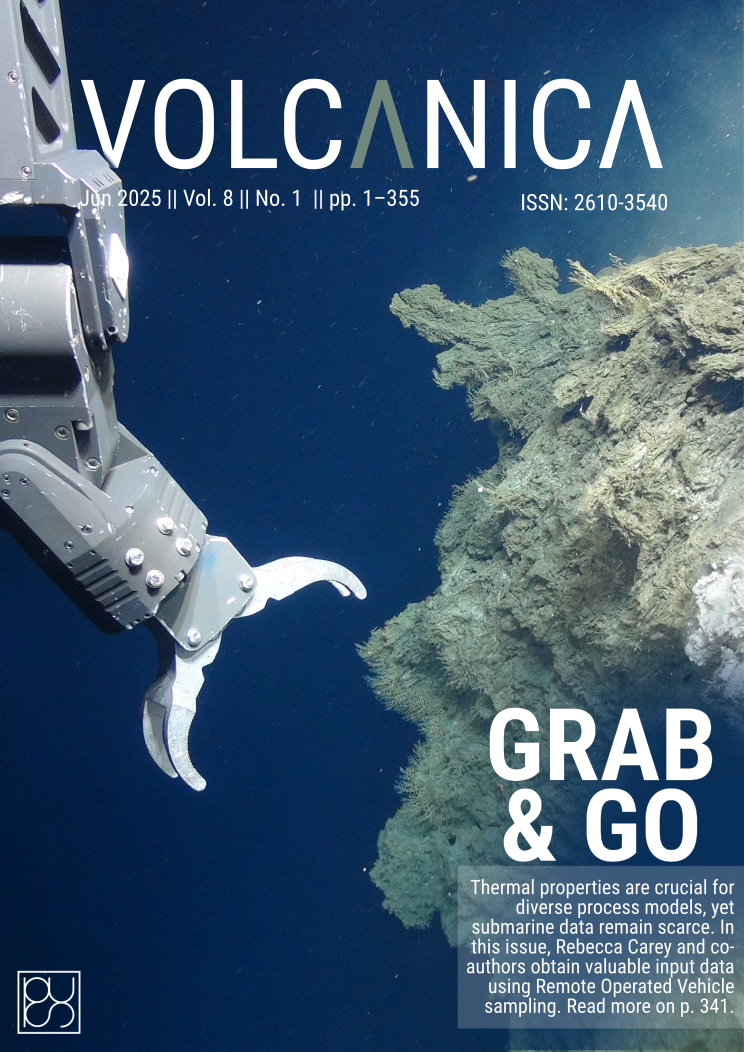Catastrophic lava flow levee failure: precursors, processes, and implications
Main Article Content
Abstract
During an effusive eruption crisis the initial advance of a lava flow is typically the primary focus of model forecasts and hazard management efforts. Flow branching and lateral expansion of lava flows can pose significant dangers within evolving flow fields throughout the duration of an eruption and are an underappreciated hazard. We use field monitoring, infrasound, time lapse imagery, and lidar data collected during the 2018 lower East Rift Zone eruption of Kīlauea (Hawai‘i) to track the origins, progression, and implications of a flow branching event caused by catastrophic levee failure. Our analyses show that surges in effusion rate, rheologic transitions between pāhoehoe and ‘a‘ā flow regimes, slope-breaks, pre-existing topographic highs, and the structure of perched levee walls all played a role in the failure of the levee and subsequent re-routing of the lava flow. Failure of perched lava structures leads to an acutely hazardous situation because lava impounded by the structure can rapidly inundate the landscape. This is the first time a levee failure event has been observed in such detail with numerous monitoring techniques; this unprecedented level of observation provides quantifiable insights into levee failure processes that have important implications for hazard mitigation and an improved understanding of lava flow emplacement dynamics
Downloads
Article Details

This work is licensed under a Creative Commons Attribution 4.0 International License.
© The Author(s).
Submission of an original manuscript to Volcanica will be taken to mean that it represents original work not previously published, and not being considered for publication elsewhere.
The Creative Commons Attribution 4.0 International License permits unrestricted use, distribution, and reproduction in any medium, provided you give appropriate credit to the original author(s) and the source, provide a link to the Creative Commons license, and indicate if changes were made.
Accepted 2024-11-04
Published 2025-01-31





